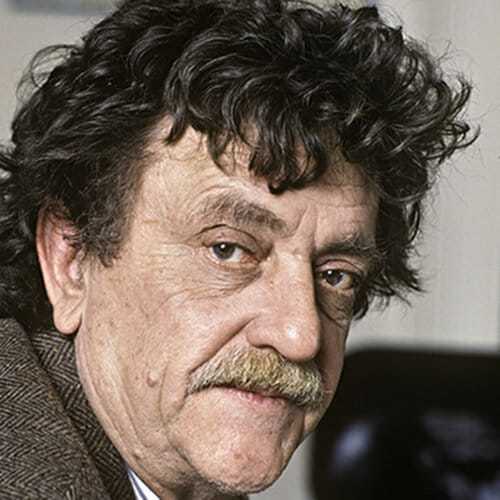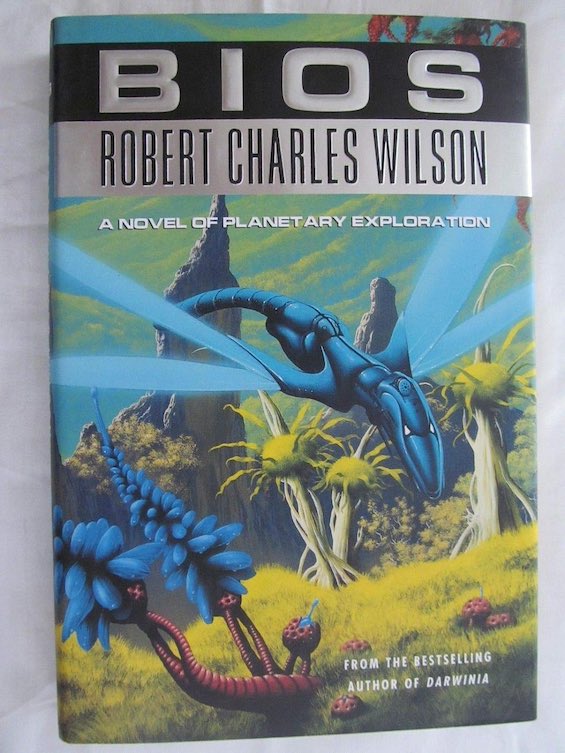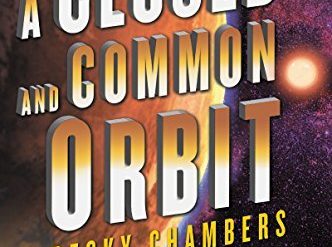
Kurt Vonnegut didn’t write science fiction, or so he always insisted. So, why would Kilgore Trout keep showing up in his books? Trout is the author of more than 117 science fiction novels and 2,000 short stories, none of which received the approval of either the critics or the reading public. And why would that author’s son, Leon Trotsky Trout, narrate this curious story about the last days of human civilization—set from the perspective of a million years in the future? Curious, isn’t it? But that’s Kurt Vonnegut for you. It’s not science fiction, no matter what a reader might say. As he would proclaim (and did in many of his books), so it goes.
It’s set one million years in the future, but it’s not science fiction
Okay, so this is weird to start with. Vonnegut’s, or rather Leon Trout’s, story begins “one million years ago, back in 1986 A.D.” And it quickly gets weirder.
Galápagos by Kurt Vonnegut (1985) 338 pages @@@@ (4 out of 5)

Some PR flack in New York has conjured up “the Nature Cruise of the Century.” Jacqueline Kennedy Onassis and other world-class celebrities are scheduled to join the cruise, which will soon leave Guayaquil for the Galápagos Islands. Of course, the widow Onassis isn’t coming, and none of the other celebrities are, either. In fact, there will be just ten—count them, ten—human beings on board the luxurious Bahía de Darwin. They’re the last surviving people on Earth, as it turns out. These include:
- Captain Adolf von Kleist, the German-Ecuadorian co-owner of the ship, who “would in fact become the ancestor of every human being on the face of the earth today” (with today understood as being one million years in the future)
- Mary Hepburn, a fifty-one-year-old widow from Ilium, New York, whose husband had signed them up for the cruise in the throes of dementia shortly before dying
- Selena MacIntosh, the blind eighteen-year-old daughter of a New York financier who’d intended to buy the Bahía de Darwin and half the rest of Ecuador
- A thirty-five-year-old con man named James Wait, who had cheated seventeen wives out of their life savings and was traveling on the latest of his many assumed names, about to marry his eighteenth
- Six young Kanka-bono girls who had fled their cannibalistic Amazon tribe
Financial collapse and a global pandemic, but it’s not science fiction
Meanwhile, everything’s going to hell elsewhere on Earth. The global economy is collapsing, so the money in most countries has lost all its value. “People had simply changed their opinions of paper wealth, but, for all practical purposes, the planet might as well have been knocked out of orbit by a meteor the size of Luxembourg.” And a virus of some sort is invading men’s sperm, making them all infertile. So, yes, the human race is dying off. All except for that motley collection of ten human beings aboard the Bahía de Darwin.
So, do you know enough now? Do I need to spell things out? This is a very funny, not to say cockamamie, story, and there seems no point in spoiling it by telling you more. Just know that, like all of Vonnegut’s work, Galápagos is a deadly serious reflection on the parlous state of human affairs late in the twentieth century. Not science fiction? Maybe. But who cares?
About the author

Kurt Vonnegut (1922-2007) wrote fourteen novels from 1952 to 1997, earning a place as one of America’s most widely read authors of the last half of the twentieth century. He is best remembered for his 1969 anti-war novel, Slaughterhouse-Five, which is based on his experiences as a prisoner of war in Dresden, Germany, during the notorious Allied firebombing of that city. He also wrote seven plays, ten books of nonfiction, and a slew of short fiction.
Confession time. Half a century ago—yes, it was 1970—I wrote Kurt Vonnegut the first and only fan letter I’ve ever sent a writer. He was at the height of his fame then and surely received a torrent of mail every day. So I was astonished when a response showed up in my mailbox shortly afterward. Without a stamp. (The letter was typed—with typos—and answered a question I’d asked.) Apparently, Vonnegut was on a speaking tour and was passing through Berkeley for a lecture on campus. Which, holed up with my typewriter and shunning the world, I didn’t know a thing about until too late. (So it goes.) But I couldn’t imagine why he (or someone on his behalf) would have physically inserted a letter in my mailbox. I lived a couple of miles from the campus in those days. Strange, isn’t it? I wish I could find that letter.
For further reading
Before I launched this blog I had read virtually everything Kurt Vonnegut wrote. Since then, I’ve re-read and reviewed two of his other books here:
- Player Piano (Kurt Vonnegut’s warning about automation in his first published novel), which is set in Ilium, New York
- Slaughterhouse-Five, or: The Children’s Crusade (Kurt Vonnegut’s celebrated novel about the Dresden firebombing), in which Kilgore Trout’s fan, Billy Pilgrim, is the protagonist
I’ve also reviewed two biographies of the author. One, about him alone, is And So It Goes—Kurt Vonnegut: A Life by Charles J. Shields (And so it goes: The sad life of Kurt Vonnegut Jr.). The other is The Brothers Vonnegut: Science and Fiction in the House of Magic by Ginger Strand (A dual biography: Kurt Vonnegut and his brilliant brother). Bernard Vonnegut was a scientist working in upstate New York for General Electric, where he got his little brother a job in public relations after World War II.
If you’re looking for good science fiction, try these:
- The ultimate guide to the all-time best science fiction novels
- Great sci-fi novels reviewed: my top 10 (plus 100 runners-up)
- Seven new science fiction authors worth reading
- The top 10 dystopian novels reviewed here (plus dozens of others)
And you can always find my most popular reviews, and the most recent ones, plus a guide to this whole site, on the Home Page.




























Trout’s novel Venus on the Half Shell had approval within at least a small portion of the critics and reading public, the latter of which included me.
Glad to hear it.